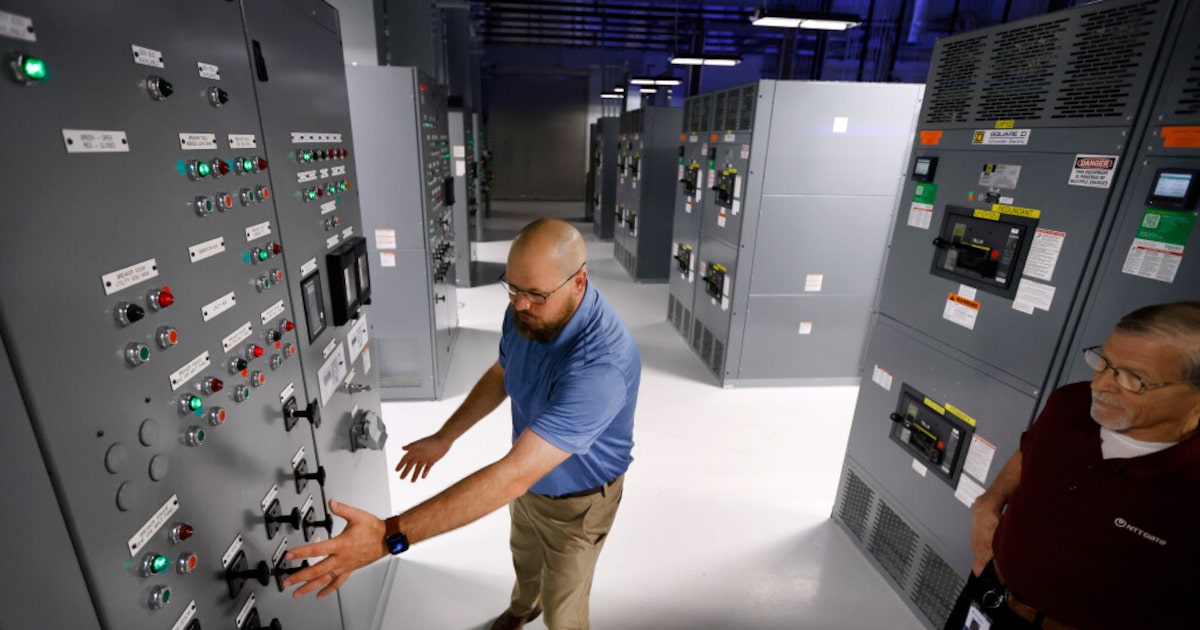Dallas-Fort Worth is in the midst of a data center boom driven by artificial intelligence ― and everybody’s talking about it.
The spaces that house computer systems, servers, tech equipment and the infrastructure to support it all have existed for decades.
Yet skyrocketing demand for places to store online information has transformed what used to be nondescript office buildings into factory-sized structures.
There’s lots of excitement about near-term growth and opportunities — especially on Wall Street, which is front-running the trillions of dollars being spent on artificial intelligence, and more to come.
Business Briefing
But the optimism is increasingly giving way to concern about how data centers will put a strain on natural resources, energy and affordable property ― and whether there’s enough of all three to go around.
For now, Dallas-Fort Worth is reaping the reward of being one of the nation’s focal points for the data center boom, with new structures springing up across the region and state on a regular basis.
“Everything we do has a physical footprint somewhere,” said Steven Lim, senior vice president of marketing and product at NTT Global Data Centers Americas.
That includes streaming movies, taking photos or posting to social media, among other favorite digital-era pastimes.
“One of the worst things someone did, and I don’t know the origin of it, but whoever came up with the term ‘cloud,’ I think really messed everyone up,” Lim said with a laugh.
“Because everyone thought, ‘Oh, it’s floating somewhere out in the world,’ and that’s so far from true.”
‘Optimal place’ to store information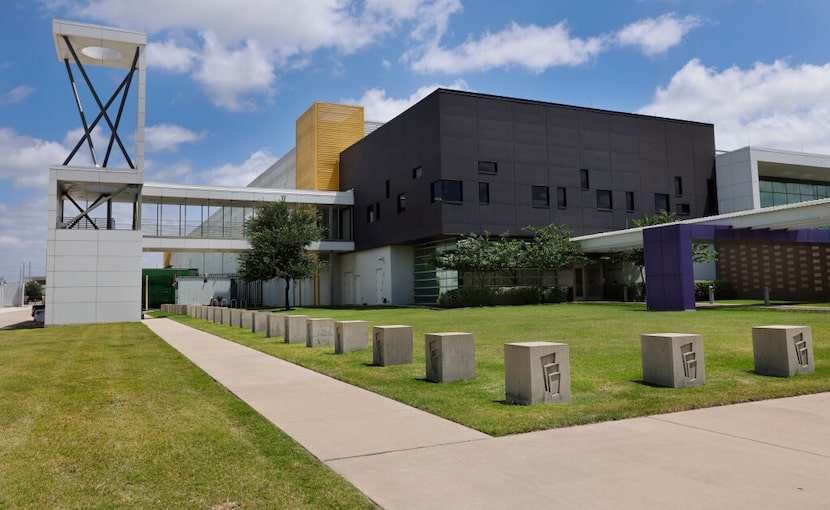
An exterior view of NTT Data’s Dallas TX1, one of three completed data centers on its Garland campus, June 23, 2025.
Tom Fox
As a global leader in the industry, NTT Data is the third-largest data center provider operating more than 150 facilities in over 20 counties and regions, including North Texas.
The company’s 42-acre campus on Lookout Drive in Garland includes Dallas TX1 Data Center, deemed one of the “most beautiful data centers in the world.”
Outside, it’s a two-story, multidimensional boxy building with mustard yellow details, but inside is a highly intricate — and highly secure — collection of servers.
Employees talk with ease about the cabinet farms, dense fiber network and redundant power feeds. For those new to the world of data centers, standing inside feels like being in the maze of a computer’s hard drive.
TX2 and TX3 data centers are on the same property nearby the skeleton of soon-to-be TX4, which will bump the campus’ total IT space to 124 megawatts.
“Data centers are really designed to be the optimal place to put all of this equipment that is being rolled out in support of everything we do,” according to Bruno Benti, senior vice president of global product management at NTT Global Data Centers Americas.
“The fact that data centers exist is good because we’re designing our data centers to be efficient, to be sustainable and to really be able to support all of this equipment at the same time.”
This discrete but powerful campus is a glimpse into Dallas-Fort Worth’s status as one of the largest and most active data center markets in the country.
The draw of North Texas
In recent years, Texas’ relatively cheap energy market and ability to connect to the grid, paired with the state’s “open-for-business” attitude and the race to solidify itself as a global leader in AI, has fueled a rapid growth in the number of data centers.
While data centers are everywhere, they tend to be clustered in key markets where there’s availability of power, land and connectivity in addition to user demand.
“Data centers are the backbone of the 21st-century economy, and they’re economic drivers for D-FW and in Texas communities,” said Dan Diorio, vice president of state policy at the Data Center Coalition.
Even with a grid that has faced troubles and is challenged by record levels of demand, the state “is poised to really become a center of data center development and technology innovation,” Diorio added.
As of last September, the Lone Star State had a total of 279 data centers, according to the Texas Comptroller, with about half of them operating in Dallas-Fort Worth. A year later, Texas has an estimated 388 data centers, with 190 in D-FW.
Last fall, the area was home to 591 megawatts of data center inventory, the second-most in the nation after northern Virginia. Capacity in D-FW has since been surpassed by Chicago, Atlanta and Phoenix, according to a June CBRE report, but some industry experts say North Texas’ higher rank still stands.
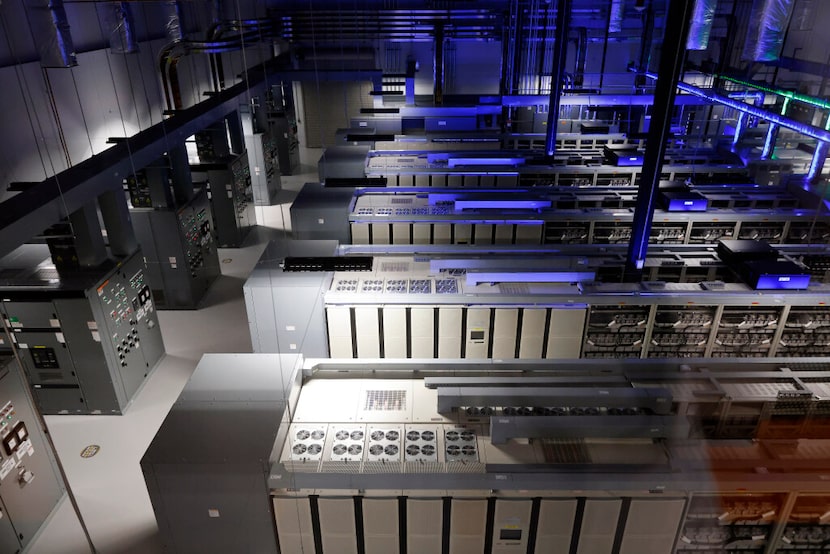
An overhead view of Dallas TX1’s electrical plant at the NTT Data campus in Garland, June 23, 2025.
Tom Fox
At the end of last year, Texas had nearly 41 million gross square feet of data center capacity, the majority of which was in Dallas-Fort Worth. The facilities provided state coffers with more than $1.6 billion in tax revenue, and an additional almost $1.6 billion for local tax authorities, according to a report from the Data Center Coalition.
Mike Rosa, Dallas Regional Chamber senior vice president of economic development, said, through a business lens, the region choosing to intentionally embrace data centers is part of wanting to secure a future economy for jobs and solidify itself as a place that’s energetic, active and relevant.
“I think about [data centers] almost like the highways and the airports that are the fundamental infrastructure of the future,” Rosa said. “I think data infrastructure is going to be a big piece of that.”
In just the last year, multiple big-name companies have decided to bring more data centers to the region.
Google announced a $1 billion investment through data centers campuses in Midlothian and Red Oak. Also in Red Oak, which is becoming a magnet for these tech facilities, DataBank is constructing a 480-megawatt data center and three Dallas-based firms announced a partnership to build a $1 billion communications infrastructure campus.
A $700 million data center being built in Plano already has occupants such as an Nvidia-backed cloud computing firm that provides hardware and services to power AI development. Meanwhile, there is a $650 million plan to build two data centers in southern Dallas County near the border of Wilmer and Lancaster.
Related
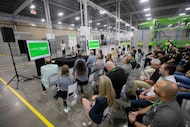
CBRE predicts Dallas-Fort Worth’s data center inventory will more than double by the end of 2026 with at least 605 megawatts worth of projects under construction.
Rosa said the region wants to ensure it has the infrastructure to continue to support its robust technology sector as the world becomes increasingly data-centric.
“I see all these companies, headquarters, advanced manufacturing, all these interests that will be induced to come here because we are a cut above in all kinds of infrastructure, including the data center infrastructure,” he said.
‘Significant scale issue we’re dealing with’
Though data centers have become somewhat synonymous with the boom of AI, they also support the modern economy that’s online 24/7 365.
“A data center is basically the foundation for technology adoption,” Data Bank CEO Raul Martynek said during a May event, “AI for Real: Powering Tomorrow,” in downtown Dallas.
“If you think of anything on your phone, anything on your computer, any digital experience, [it] originates and terminates in a data center.”
The event, hosted by Widehall and Siemens, brought together regional and state leaders for a fireside chat on “the real-world impact of AI and energy.” Data centers were an integral part of the discussion.
Martynek said humans’ addiction to technology is driving consumption and fueling the data center demand. According to him, all the information ― including what’s stored on apps like Instagram, Meta, Strava, Google and banking — has to be housed in a data center.
Oncor, headquartered in Dallas, is the largest energy delivery company in Texas, building, operating and maintaining the electric grid for about 40% of the state.
“Data centers in their current form are relatively new for us,” according to Geoffrey Bailey, VP of corporate strategy for Oncor Electric Delivery, who also spoke at the event.
Historically, he said, an average data center for Oncor would be between 30 and 50 megawatts, while the average data center for the company today is between 700 and 800 megawatts.
There are also singular facilities that require 1,000 to 2,000 megawatts of power. For context, the city of Fort Worth’s peak load is about 3,000 megawatts, Bailey said.
Similarly, if all of the data center demand Oncor currently has in Wilmer were to interconnect with the system, a city with a population of about 6,000 people would have a peak demand eight times greater than the city of Austin.
“So you’re talking about a single number of large data centers with the loads of medium to large cities,” Bailey said.
“That is a scale issue that is relatively new, certainly for folks like Oncor… really in the past two to five years.”
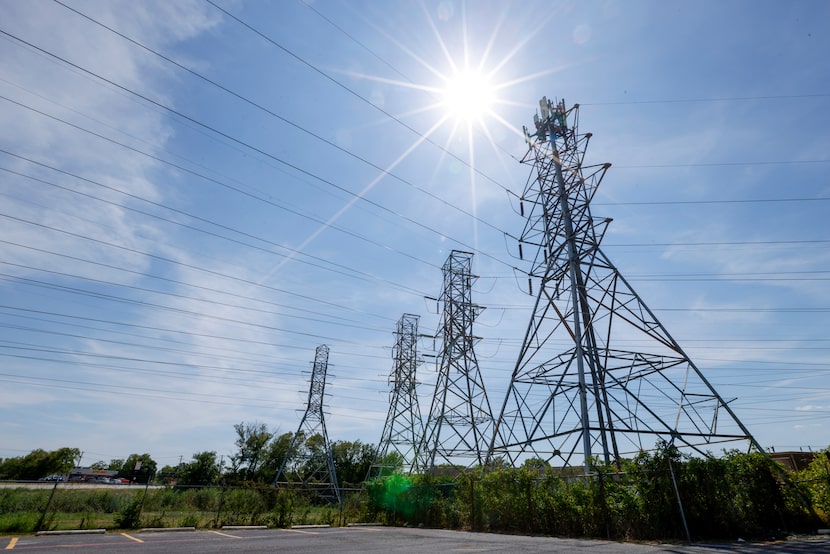
The sun is seen over long-distance transmission power lines, Monday, Aug. 19, 2024, in Fort Worth.
Elías Valverde II / Staff Photographer
As of June 30, Oncor’s large commercial and industrial interconnection queue had 552 requests, which included roughly 186,000 megawatts from data centers. The queue is about 38% higher than the same time last year.
“There is a significant scale issue that we’re dealing with and scaling up accordingly,” he said.
With North Texas and the Interstate 35 corridor becoming an epicenter for data centers and hyperscaler development globally, there’s a capital need to support it.
A decade ago, Oncor had a 5-year capital plan to spend $1.2 billion. The utility’s most recent 5-year capital plan released in February is $36 billion, largely to support the overwhelming, large commercial and industrial load entering its service territory.
The company reported its large commercial and industrial interconnection queue of customer requests, including requests without signed agreements. Those exceeded 137,000 megawatts at the end of last year, a roughly 250% increase over the amount of potential load in the queue in December 2023.
Resource concerns grow
Meeting the climbing demand for energy and potential strain on the grid was top of mind at Texas’ 89th Legislature earlier this year.
Electricity consumption is growing fastest in the Lone Star State, according to the U.S. Energy Information Administration. The agency predicted large-scale computing facilities, including data centers and cryptocurrency mining operations, could total 54 billion kilowatthours this year, rising nearly 60% from expected demand in 2024.
Although some experts think projections are too high, the Electric Reliability Council of Texas estimated it’d need nearly 150 gigawatts of peak demand in 2030, largely driven by the expected growth of AI and data centers.
Large data centers, which are becoming increasingly common, have power demands of 100 megawatts or more, equivalent to the annual energy usage of 350,000 to 400,000 electric vehicles, according to the International Energy Agency.
Separately, the IEA expects ERCOT will approve 9,500 megawatts of large flexible load demand capacity by the end of this year, which would be a 73% increase.
State legislators passed a bill that allows officials to power down data centers during an emergency. A change was made to the legislation that requires 24-hour notice, after data center operators argued some facilities that carry out critical operations ― including military functions and 911 call centers ― may need advance warning.
Other operators noted that some data centers build on-site generation, or nearby existing generation sites, to proactively lessen the impact on the grid.
Related
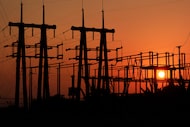
Water use for the typically complex cooling systems used by centers has also been flagged as a top concern, especially in a state like Texas that’s known for drought in certain regions.
Researchers estimated AI alone could be responsible for the withdrawal of upward of 2.4 million Olympic-sized swimming pools of freshwater in 2027, according to Environment Texas.
While it’s not a complete solution, efforts are underway to find innovative solutions that will quench the thirst.
For example, NTT began using “green technologies” like “direct contact liquid cooling” in India, where a server is submerged into a nonconductive liquid to keep it cool.
In this pivotal moment for data centers, the challenge is finding a balance between serving the energy demand that keeps the economy ― and everyday life ― operable while being good stewards of the energy resources and environment.
Diorio, with the Data Center Coalition, argued that after about two decades of flat to no load growth, data centers are just one piece driving the uptick in energy demand.
He pointed to the return of domestic manufacturing, electrification of homes, vehicles, businesses, industries and more. The average household now has 21 devices connected to the internet, including computers, lights and thermostats.
“We’re going to generate twice as much data in the next five years as we did in the previous 10,” he said. “All this data needs to be stored somewhere and I think we all would want it here, safe, secure and domestically.”
Diorio believes data centers are committed to being responsible partners in the communities where they locate.
He added that responsibility includes considering the outward aesthetics of their properties but also paying their full cost of service for electricity, ensuring costs are allocated appropriately across the board and being efficient water users.
“More and more, Texas is at the forefront and at the heart of innovation in the U.S. and the data center industry is playing a big part in that,” Diorio said. “Dallas-Fort Worth is poised to continue to be a leader on that, especially in the state.”
This reporting is part of the Future of North Texas, a community-funded journalism initiative supported by the Commit Partnership, Communities Foundation of Texas, The Dallas Foundation, the Dallas Mavericks, the Dallas Regional Chamber, Deedie Rose, Lisa and Charles Siegel, the McCune-Losinger Family Fund, The Meadows Foundation, the Perot Foundation, the United Way of Metropolitan Dallas and the University of Texas at Dallas. The News retains full editorial control of this coverage.
